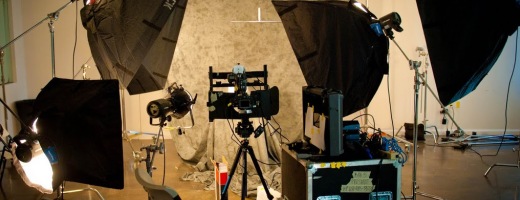HP Labs redefines live entertainment with immersive 3D
HP unveils HP Photon Engine solution based on research from HP Labs
Palo Alto, Nov. 7, 2011 -- HP today unveiled the HP Photon Engine solution, capable of broadcasting true-to-life 3D content on huge surfaces. It also allows enterprises to transform how they interact with data and customers.
3D the size of life
The next big thing in entertainment—Immersive 3D—may not stem from just one technology breakthrough, but rather the piecing together of innovations in screen technology, software and camera equipment. That's what researchers working on HP Labs' Immersive 3D Project have discovered.
To create a 3D experience so realistic that some viewers have tried to walk through the screen, HP Labs uses specialized cameras to capture and display 3D images of an event on large screens. HP Labs can create a doublewide screen for a music concert, for example, or a screen the size of a basketball court to show a basketball game.
Video normally requires a 16 by 9 ratio of width to height. "That's fine if you're creating something that will be mass produced like a TV show or movie, but the real world doesn't come in those sizes," said Henry Sang of HP Labs. "With our immersive 3D technology we can break the bounds of the normal restrictions on video."
The innovation: a new twist on old technology
3D itself is not new. "They've been doing 3D technology since the 1860s," Sang said – but Immersive 3D creates a sense of actually being there that goes beyond standard 3D.
The key to HP Labs' breakthrough 3D system is its underlying software technology, Pluribus 3D. Its algorithms link multiple digital video projectors to create a super-bright, high-resolution video on a single screen.
"It's as simple as pointing several projectors toward a screen and turning them on. The system's camera captures a snapshot of each image being projected onto the screen and sends it to the PC. The Pluribus 3D algorithms then automatically adjust the images so they fit together seamlessly," says Nelson Chang, Ph. D., a principal scientist in HP Labs' Mobile and Immersive Experience Lab.
But Immersive 3D is not just a technology innovation. It's also breaking new ground for HP's business. HP Labs' Pluribus 3D technology is part of a push to not just create better versions of existing products, but to invent entirely new product categories.
"Technology innovation together with business innovation gives you that double whammy that allows you to distance yourself from your competitors," Sang said.
And although producing 3D experiences may sound like a leap from HP's traditional lines of business, it's actually "like an inkjet cartridge that spits out colored light instead of colored water," Sang said.
Movie theater-quality 3D experience for a fraction of the cost
The beauty of the Pluribus system is that it creates movie theater-quality images using several $1,000 video projectors, compared to a movie theater projector that typically costs $100,000.
The result is an experience that makes the audience feel like they are really at the event they're watching. "You can walk right up to the screen," Sang said. "We have people dancing in front of our screens. We've had problems with people walking through our screens" because they don't realize the screen is there.
Business opportunities
HP has used Pluribus to create immersive 3D for such events as the Marchesa 2012 Fashion Show in New York, a concert in Las Vegas, and an art festival in Europe. The company is also working with early-adopter customers to use Pluribus 3D for additional types of immersive 3D experiences.
The likely business model would be an immersive 3D event service in which HP provides all the underlying technology and works with partners to produce the event.
The challenge now is to turn the unique experiences the Labs team has created so far into a "steadily reproducible thing that I can sell 1,000 times," Sang said.